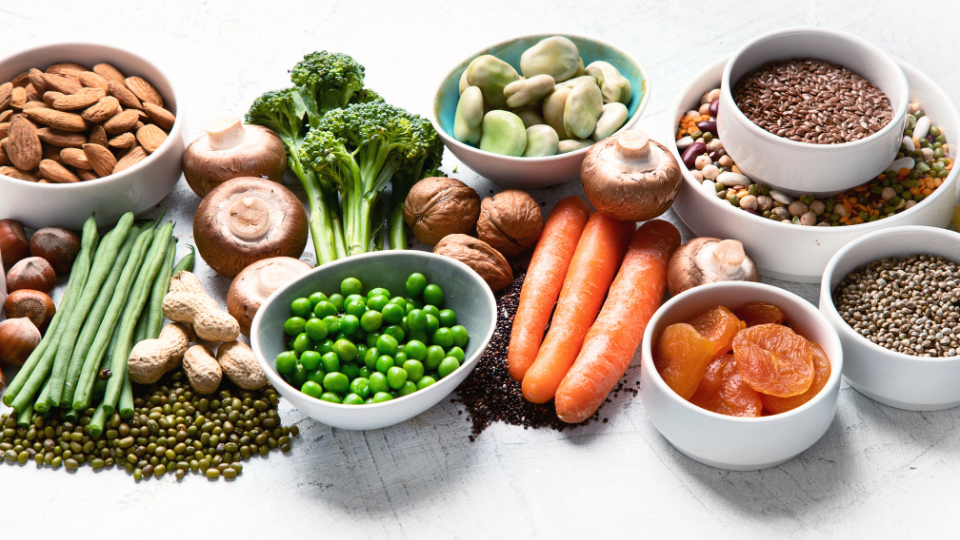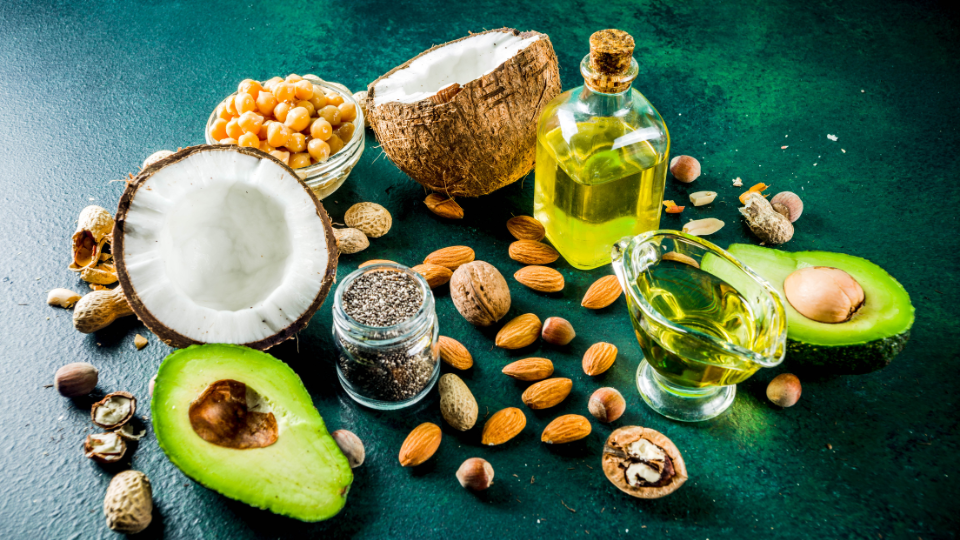Introduction Vegetarian Keto Diet
The ketogenic diet, commonly known as the keto diet, has gained immense popularity for its potential to promote weight loss and improve overall health. This Low-carbohydrate, high-fat diet induces a state of ketosis, where you burn fat for fuel instead of carbohydrates. choosing the right foods is one important aspect of achieving success on the Vegetarian Keto Diet. in this blog, I will be discussing keto-friendly vegetarian foods and the benefits of this lifestyle
Why the Vegetarian Keto Diet?
The vegetarian keto diet is a low-carbohydrate, high-fat eating plan that emphasizes plant-based sources of protein and healthy fats. You do it by restricting carbohydrate intake and increasing the consumption of good fats, followers of this diet aim to achieve a state of ketosis, where the body burns fat for fuel instead of carbohydrates.

Protein is a crucial Component of any diet, and for vegetarians on the keto journey, there are plenty of plant-based options. Incorporate such as tofu, tempeh, seitan, edamame, and legumes like lentils and chickpeas into your meals. These protein-rich foods not only support muscle health but also contribute to a feeling of fullness, aiding in weight management.
- Almonds, walnuts, and pecans are low in carbs and high in healthy fats and protein
- Chia seeds and flaxseeds are excellent sources of fiber and omega-3 fatty acid
- Macadamia Nuts very low in carbs and high in macronutrients
- Full-fat cheese cheddar, mozzarella, and cream cheese low in carbs
- Greek yogurt is unsweetened and high in protein
- Heavy Cream is a keto-friendly addition to coffee and recipes
- Butter is a staple for cooking and flavor enhancement

Avocados, nuts, seeds, and olive oil are staples in the vegetarian keto diet. These sources of healthy fats provide essential nutrients, including omega-3 fatty acids, while contributing to the overall macronutrient balance required for ketosis. Experiment with different nuts and seeds in salads, snacks, and smoothies to diversify your fat intake.
- Avacado rich in healthy fats and fiber
- olive oil is an excellent source of monosaturated fats
- coconut oil contains medium-chain triglycerides [MCTs] that boost ketone production
- Butter high in saturated fat and low in carbs

Non-starchy vegetables are low in carbohydrates and rich in fiber, making them ideal for the vegetarian keto diet. Leafy greens, broccoli, cauliflower, zucchini, and bell peppers are excellent choices. These veggies not only add essential nutrients but also contribute to a sense of satiety, helping you stay on track with your dietary goals.
- Leafy Greens spinach, kale, and swiss chard are low in carbs and rich in vitamins
- Crucifer vegetables broccoli, cauliflower, and Brussels sprouts are keto-friendly
- Zucchini and squash are low in carbs and be spiralized for pasta alternatives
- Asparagus and green beans are great choices for fiber and micronutrients

In Summary
Navigating the Vegetarian Keto Diet is made easier with a diverse range of delicious and nutritious foods. By focusing on healthy fats, quality proteins, and low-carb vegetables, you can create a well-balanced and satisfying meal plan. Remember to stay mindful of your carb intake, prioritize whole, unprocessed foods, and consult with a healthcare professional to ensure the keto diet is suitable for your individual needs.
What are The Health Benefits of a Keto Diet?
Weight Loss
Vegetarian Keto Diet The primary aspect many people follow the keto diet is weight loss. By reducing carbohydrates and increasing fat consumption, the body enters the state of ketosis, where it burns stored fat for energy. This can be effective for weight loss
Improved Blood Sugar Control
The keto diet helps regulate blood sugar levels, making it beneficial for individuals with type 2 diabetes. By limiting carbohydrates, the diet can reduce blood sugar in insulin levels.
Increased Energy and Mental Clarity
Ketones, produced during ketosis, are an efficient source of energy for the brain. Some individuals on the keto diet report increased mental clarity, focus, and sustained energy levels without the typical energy crashes associated with high carbs.
Appetite Control
The keto tends to be more satiating than high-carb diets, which may help control appetite and reduce overall caloric intake. This helps to lose weight and maintenance.
Improved Lipid Profiles
Some studies suggest that the keto diet may lead to improvements in lipid profiles, including increased levels of HDL [High-Density Lipoprotein or good Cholesterol] and decreased levels of triglycerides.
Inflamation Reduction
Chronic inflammation is linked to various health conditions. The keto diet may help reduce inflammation markers in the body, potentially benefiting individuals with conditions related to inflammation.
Epilepsy Management
The ketogenic diet has a long history of being used to manage epilepsy, especially in children who do not respond well to traditional treatments. It is believed that ketones may have neuroprotective effects.
Potential Cancer Benefits
Some research suggests that the ketogenic diet may have anti-cancer properties, potentially slowing the growth of certain types of tumors, however, more research needs to be done in this area.
Polycystic Ovary Syndrome [PCOS] Management
Some women with PCOS may experience improved symptoms, such as a hormonal balance and menstrual regularity, on the keto diet. However individual responses can vary.
Improved Cardiovascular Health
While there is ongoing research, some studies suggest that the keto diet may positively impact cardiovascular health by improving risk factors such as blood pressure and cholesterol levels.
How To Start a Vegetarian Keto Diet?
Starting a Vegetarian Keto Diet requires careful planning and a gradual transition to help your body adjust to the changes in macronutrient intake. Following is a step-by-step guide to help you get started on the keto diet.
Consult A Healthcare Professional
It’s essential to consult with a healthcare professional or a registered dietitian before starting a keto diet, especially if you have any underlying health conditions or concerns. they can provide personalized advice based on your individual needs.
Educate Yourself
before diving into the keto lifestyle, familiarize yourself with the principles of the dirt. Understand the macronutrient ratios, food choices, and potential benefits and challenges associated with keto.
Plan Your Meals
Create a meal plan that includes keto-friendly recipes and snacks. Focus on whole, unprocessed foods such as low-carb vegetables. and healthy fats. Planning will help you stay on track and avoid reaching for non-keto options.
Calculate Your Macros
Use an online calculator to determine your daily macronutrient goals. A typical keto diet consists of approximately 70-75% Fat, 20-25 % protein, and 5-10 % carbohydrates. Adjust these ratios based on your individual needs and goals.
Incorporate Electrolytes
As your Body Adjusts to the keto diet, you may experience a loss of electrolytes. Ensure you are getting enough sodium, potassium, and magnesium through food sources or supplements to prevent electrolyte imbalances.
Monitor Your Body Response
Pay attention to how your body responds to the diet. Some people may experience the “keto flu” during the initial stages, with symptoms such as fatigue, headaches, and irritability. These symptoms are often temporary and can be alleviated with proper hydration and electrolyte balance.
Keto Diet Macronutrients Nutritional ratios
- Fat 70-75 %
- Protein 20-25 %
- Carbohydrates 5-10 %
In Summary
Remember that everyone’s body reacts differently to dietary changes, so it’s important to listen to your body and make adjustments as needed, if you have concerns or experience persistent issues, consult with a healthcare professional or a registered dietitian for personalized guidance. Individual Nutritional needs vary, and it’s essential to tailor the keto diet to your specific health goals and requirements.

